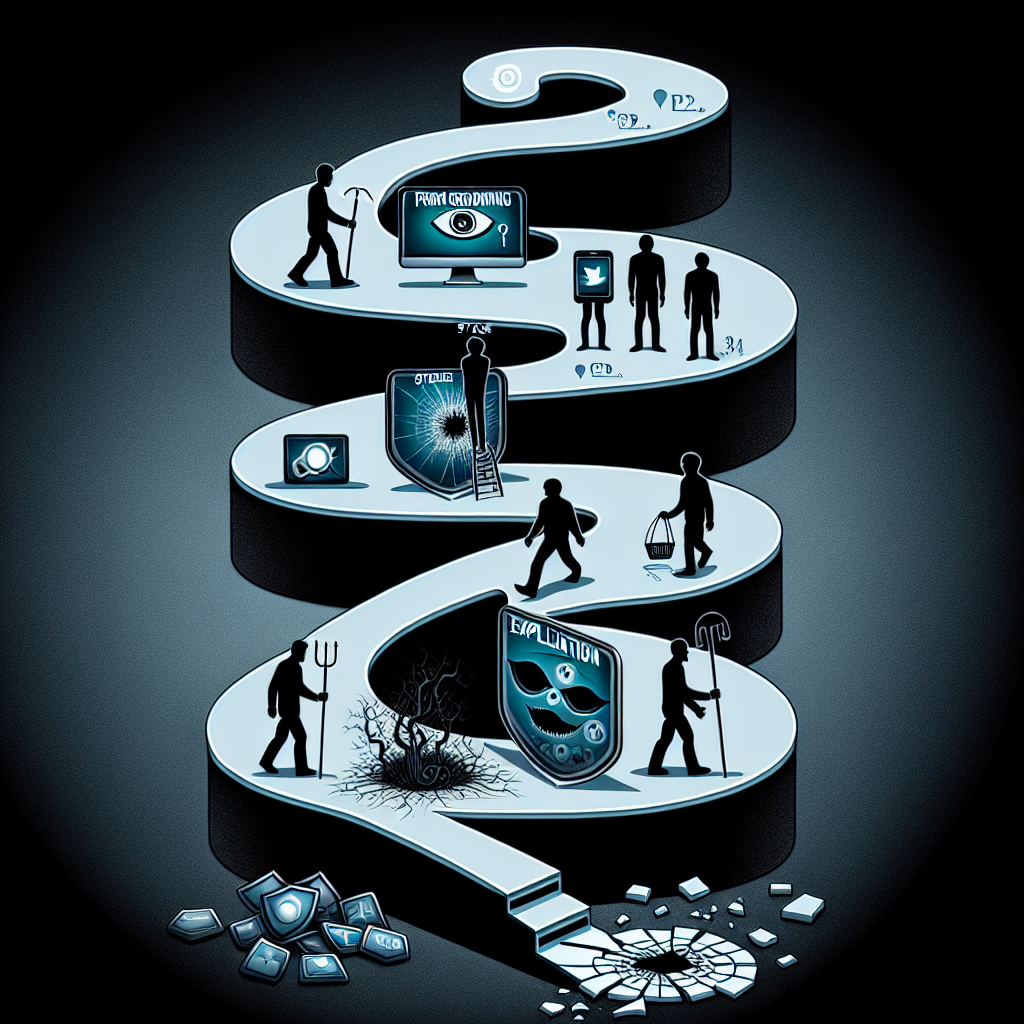Introduction
In an ever-evolving digital landscape, where interactions and connections often occur through screens rather than face-to-face, the threat of online predation has escalated alarmingly. From Grooming to Exploitation: The Stages of Online Predation is a crucial narrative that sheds light on this dark side of the internet. Understanding these stages is not just relevant; it is essential for parents, educators, and anyone involved in safeguarding our youth. This article will navigate the treacherous waters of online predation, offering insights and strategies to combat these predators.
Understanding Online Predation
Online predation can be defined as the manipulation and exploitation of vulnerable individuals—often minors—using digital platforms. The pathway from initial contact to full exploitation involves several key stages, each marked by specific strategies and actions taken by predators.
The Stages of Online Predation
- Grooming
- Rapport Building
- Exploitation
- Secrecy and Isolation
- Desensitization
Throughout this article, we will delve deeply into each stage, providing insights to help identify and combat these threats effectively.
Stage 1: Grooming
Definition and Tactics
Grooming is the initial stage where predators identify and approach potential victims. It often involves building an emotional connection with the victim, making them feel safe and understood. Often taking place in chat rooms, social media, or gaming platforms, grooming is a calculated process that can involve various tactics, such as:
- Flattery: Predators often compliment their targets to establish trust.
- Reciprocity: They may share personal information as a tactic to encourage their victim to share as well.
- Manipulation: Using emotional triggers to keep victims engaged and reliant.
Case Study: The "Virtual Friend"
In 2018, a teenager in the U.S. was approached by someone posing as a fellow gamer. Through compliments and shared interests, the predator was able to establish a friendship. The predator utilized gaming as a means to build trust. By presenting themselves as a kindred spirit, they successfully drew the victim into a web of manipulation.
Analysis: This highlights the importance of education on digital literacy and the potential risks present even in seemingly harmless environments like gaming.
Stage 2: Rapport Building
After grooming, predators move to the rapport-building stage, where they deepen the emotional connection. Their techniques may include:
- Shared Secrets: Encouraging the victim to share personal dilemmas or insecurities.
- Emotional Support: Offering help in times of distress can create a dependency.
Statistics Overview
| Tactic | Percentage of Use in Predation Cases |
|---|---|
| Flattery | 60% |
| Emotional Support | 75% |
| Sharing Secrets | 50% |
Stage 3: Exploitation
Here is where the predator moves to exploit the relationship they have established. This can include:
- Coercion: Unsuitable content requests, often involving explicit images or videos.
- Financial Exploitation: Manipulating victims into sending money.
Case Study: The "Blackmail Incident"
In 2020, a case came to light where a young girl was coerced into sharing explicit content after a predator had established a trusting relationship. Once the material was obtained, the predator threatened to share it with the victim’s friends unless further requests were met.
Analysis: This case exemplifies the severe consequences of online predation and underlines the need for secure reporting mechanisms.
Stage 4: Secrecy and Isolation
Predators often encourage victims to keep their interactions secret, which serves multiple purposes:
- Control: By keeping victims isolated, predators can reduce the chance of exposure.
- Manipulation of Reality: Victims may start to question their own perceptions of the relationship.
Signs of Secrecy
- Decreased socialization with friends and family.
- A shift in online behavior, including increased secrecy around devices.
Stage 5: Desensitization
Finally, desensitization occurs, where the victim becomes numb to inappropriate behavior.
- Normalization of Abuse: Victims may begin accepting exploitative requests as normal.
- Fear of Reporting: The threat of consequences can keep victims silent.
Conclusion
Understanding the stages from grooming to exploitation—From Grooming to Exploitation: The Stages of Online Predation—empowers individuals and communities to take precautionary measures against the threats posed by online predators. Strategies such as promoting open communication, educating about digital safety, and removing stigma surrounding these abuses are essential.
Actionable Insights
- Educate: Teach children about the stages of online predation.
- Encourage Open Dialogue: Create an environment where victims feel safe to talk.
- Promote Digital Literacy: Ensure youth understand the risks associated with online interactions.
FAQs
-
What is grooming in the context of online predation?
Grooming is a manipulative process where predators build a relationship with their victims to exploit them later. -
How can I identify if my child is being targeted?
Look for changes in their online behavior, secretive phone usage, or withdrawal from family and friends. -
What should I do if I suspect my child is being targeted?
Approach the situation compassionately, encourage honest conversation, and consider involving law enforcement or a counselor for further guidance. -
Are there specific platforms where grooming is more common?
Grooming can occur on any platform, but social media and gaming sites are notably vulnerable due to their social nature. - How can parents protect their children from online predators?
Open communication, monitoring online activities, and providing education about the risks associated with online interactions are vital.
By understanding the complex and evolving nature of online predation—From Grooming to Exploitation: The Stages of Online Predation—we can equip ourselves and the next generation with the tools to navigate digital spaces safely and securely.

